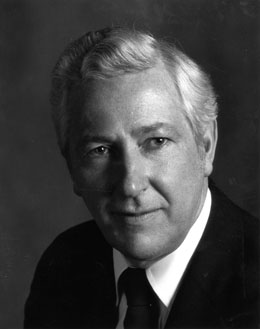On February 11, 1969, King County holds its first primary election under the new Home Rule Charter approved by voters the previous November. Republican County Commissioner John D. Spellman (1926-2018) and Democratic former Governor Albert D. Rosellini (1910-2011) win their parties' nominations for the powerful new post of County Executive. Voters reduce a field of 70 down to 14 finalists for the seven open positions on the new nine-member County Council that along with the Executive will replace the three-member Board of County Commissioners that has governed King County since it was created in 1852. In addition to the primary, voters in Seattle and 10 county school districts approve new school levies.
New Positions Available
To fill the new positions created by the county charter approved in the 1968 general election, that document provided for a primary on February 11, 1969, followed by a general election on March 11. Under the newly adopted charter, the three incumbent County Commissioners -- Republicans John O'Brien and John Spellman and Democrat Ed Munro -- automatically became members of the new County Council unless they chose to run for another position. As a result, there was no primary contest in central Seattle's District 5 where O'Brien lived or in District 7 in the southwestern County where Munro lived. Encouraged by Governor Dan Evans (b. 1925) and others to seek the Executive post, John Spellman gave up the District 2 seat in northeast Seattle that would have been his, opening that district to a contest along with the remaining six of the nine new districts.
Spellman faced four rivals for the Republican nomination for County Executive. He prevailed easily on February 11 over Stephen Hall and two minor candidates. Albert Rosellini, who was elected governor in 1956 and 1960 before being ousted by Evans in 1964, won the Democratic nomination with equal ease over Robert J. Block and three others. Three independent candidates were also on the ballot but received only a relative handful of votes, falling far short of the cumulative figure of 20 percent that, under the charter, would have added an independent candidate to the general election ballot. When the general election was held a month later, Spellman defeated Rosellini, becoming King County's first Executive and, as head of the largest county, a major political figure statewide.
A Crowded Ballot
In the February 11 primary, a total of 70 candidates vied for the open Council seats in Districts 1, 2, 3, 4, 6, 8, and 9, ranging from a high of 14 contenders each in Districts 8 and 9 to only three contestants in District 2. Republican Tracy Owen and Democratic State Representative Mark Litchman defeated nine other candidates to win the nominations in District 1. Bob Dunn beat Edward Poole for the Republican nomination in District 2, where Jim McInerney was unopposed for the Democratic nomination, the only uncontested race out of 14 nominations. Republican Bill Reams and Democrat Don MacKenzie emerged victorious from a total of 13 candidates in District 3.
The primary winners in District 4 were Republican Robert Ashley and Democrat Bernice Stern, the only woman to win nomination and one of only three women among the 70 candidates on the ballot. Democratic State Representative Gary Grant and Republican Thomas Forsythe, a former Tukwila city councilman, won the nominations in District 6. Democratic State Representative Edward Heavey and Republican Ken Koehler defeated 12 other candidates in District 8, while Democrat Dave Mooney and Republican Richard Bartlett defeated the same number in District 9.
Along with the contested primaries, there were school district levies on the ballot for Seattle and 10 County school districts -- Bellevue, Federal Way, Kent, Lake Washington, Northshore, Shoreline, Skykomish, Snoqualmie Valley, South Central, and Tahoma. All 11 passed, Seattle's winning 76 percent of the vote. For most of them, including Seattle, it was the second and final chance because the levies had failed when they appeared on the previous November's ballot.

